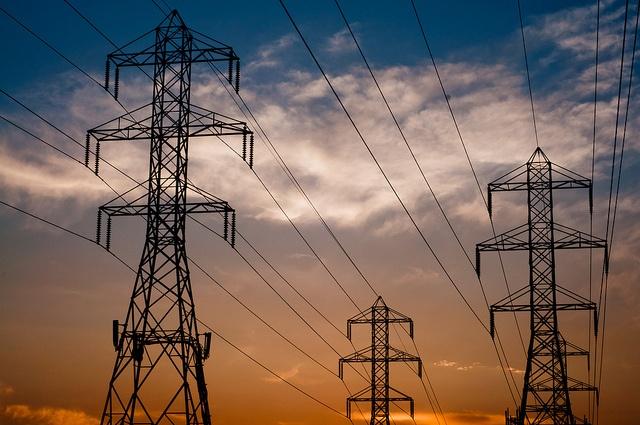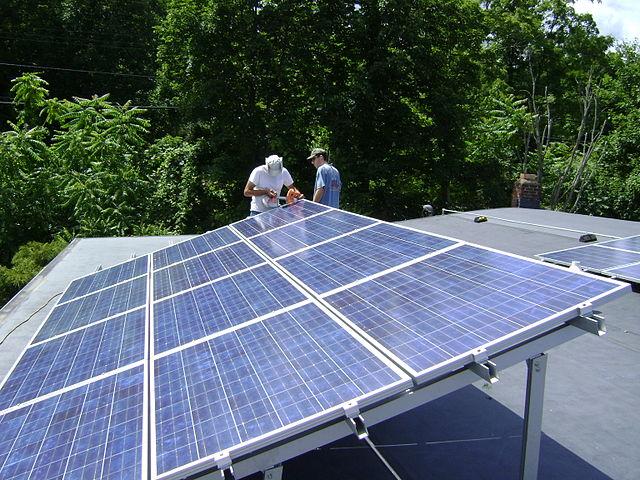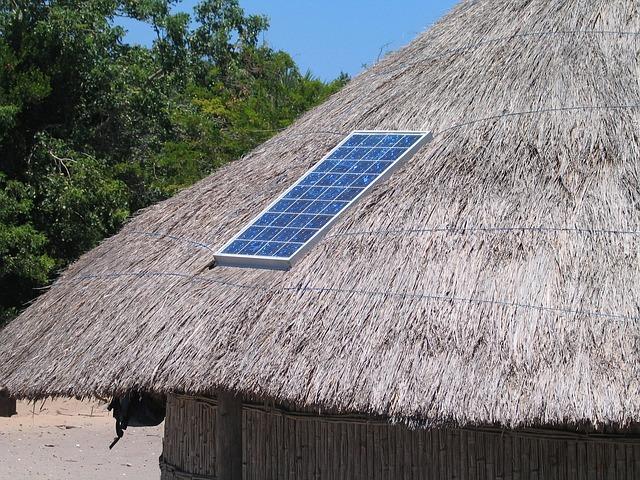Grid Update Will Allow Renewables to Prevail — Even Without Storage


Solar and wind power could substantially reduce power generation emissions in the near term, according to a recent joint study by the National Oceanic and Atmospheric Administration and the University of Colorado. Once the electric grid is updated and reconfigured to deal effectively with these new energy sources, their role will be significantly expanded.
"A transition to a reliable, low-carbon, electrical generation and transmission system can be accomplished with commercially available technology and within 15 years,” said Alexander MacDonald, co-lead author of the study and recently-retired director of the NOAA’s Earth System Research Laboratory (ESRL) in Boulder, Colorado.
The research, which was published in the journal Nature Climate Change, looked at “the cost-optimized configuration of variable electrical power generators using weather data with high spatial (13-kilometer) and temporal (60-minute) resolution over the contiguous U.S.” What they found was that “carbon dioxide emissions from the U.S. electricity sector can be reduced by up to 80 percent relative to 1990 levels, without an increase in the levelized cost of electricity.”
A major focus of the investigation was the fact that utilities today are accommodating renewables by building backup generation capacity, fired by natural gas, to account for those times when solar and wind power are not available. This is somewhat counterproductive since natural gas still produces carbon emissions. Can an optimized grid reduce the need for these backup plants, and what role will storage play?
Even though solar and wind are both intermittent sources, the fact is that the sun is shining and the wind is blowing somewhere at any given time. By looking at weather models, transmission capacity and cost parameters, the team came up with a scenario that meets demand, at a cost of 10 cents per kilowatt-hour, with a carbon reduction of 78 percent compared to the 1990 baseline.
In order to achieve that result, the model required the addition of high voltage DC (HVDC) transmission lines. MacDonald compares the development of this type of DC grid to the construction of the Interstate Highway System, back in the '50s, except that this highway system would be for electrons.
This ability to move power around the country -- in response to both electrical demand and weather conditions -- could hold the key to the wholesale migration of our national electricity supply, to one that relies primarily on renewables. According to MacDonald, this can be achieved with technologies that are available today. The only breakthrough required is one of commitment to get this done.
At the COP21 climate talks in Paris, the U.S. pledged to cut carbon emissions to 28 percent below 2005 levels by 2025. MacDonald’s team found that we could cut emissions by 31 percent in the same time-frame by making changes to the electrical sector alone.
No other study, said Mark Z. Jacobson, a Stanford University civil engineering professor, “pushes the limits” like this one, considering what can be achieved with solar and wind without relying on storage.
It shows, added Jeremy Firestone of the Center for Carbon-Free Power Integration at the University of Delaware, that the goals of the Clean Power Plan, can readily be achieved, if a commitment is made to the infrastructure needed.
However, doing so will require the cooperation of numerous states, including some that oppose this type of progress.
Image credit: Flickr/Andrew Imanaka
They're All In On It: Multinationals Collaborate On Giant Wind Turbine


The Intertubes have been buzzing with news of a new 50-megawatt wind turbine under development under the auspices of the U.S. Energy Department. The scale of the supersized turbine makes it newsworthy enough, but TriplePundit is particularly interested from a business angle because this ambitious project leverages three hot trends at once: biomimicry, public-private partnerships and inter-corporate collaboration.
The collaborative effort also underscores the extent to which powerful, diversified global corporations are embracing renewable energy -- setting off a political ripple effect that undermines the influence of fossil interests such as the Koch brothers and ALEC, the American Legislative Exchange Council.
1. Biomimicry on a gigantic scale
The largest wind turbines in the world currently clock in around the 10-megawatt range, so the huge leap to 50 megawatts requires out-of-the-box thinking. That's where biomimicry comes in.
The project, called the Segmented Ultralight Morphing Rotor (SUMR), meets this design challenge:
"... A low-cost offshore 50-MW turbine requiring a rotor blade more than 650 feet (200 meters) long, two and a half times longer than any existing wind blade."
With blades extending more than the length of two football fields, creating a system that can avoid damage during storms is a critical part of the challenge. As it turns out, the basic principle behind the solution was quite simple: palm trees.
The palm tree solution is elegantly described in an article on ASME.org, the online publication of the American Society of Mechanical Engineers. Do read the piece for a full appreciation of the biomimicry inspiration behind the new design, but for those of you on the go, here's the money quote from University of Virginia professor and research team member, Eric Loth:
The possible solution — segmented rotors — was inspired by the palm tree. “Compared to an oak tree, for instance, palms are light with a segmented trunk that flattens almost to 90 degrees. They can morph to the wind."
The basic idea is that the "fronds" or turbine blades will extend during good weather, and fold up protectively during storms.
2. Public-private partnerships fuel renewable energy progress
As noted above, the SUMR wind turbine project is spearheaded by the U.S. Energy Department, and that agency illustrates the extent to which public-private partnerships are being leveraged for clean energy development here in the U.S.
Leading the Energy Department in the SUMR project, for example, is Sandia National Laboratories. Located on two campuses in New Mexico and California, Sandia is run by the Sandia Corp., a wholly-owned subsidiary of Lockheed Martin.
If that relationship comes as a surprise to you, consider that Sandia is better known for its national defense R&D, and Lockheed of course is an important national defense partner/supplier.
As for the renewable energy connection, Lockheed has been right on top of the corporate sustainability movement. It has diversified its operations into wave energy among other renewable sources, and it is the force behind the proprietary WindTracer system for assessing and optimizing wind turbine placement in new wind farms.
The company has also engaged with NASA as part of a collaborative effort to reduce the carbon footprint of air travel.
3. Collaborating for a sustainable future
That brings us to the third trend, inter-corporate collaboration. About two years ago, TriplePundit had a conversation with Deb Frodl, head of GE's global innovation and collaboration platform, Ecomagination, in which she stressed that the collaborative model is needed to address the critical problems of today leading to "big outcomes that change the world."
That mindset is clearly at play in the SUMR wind turbine project. In addition to Lockheed Martin, the project has pulled in GE, Dominion Resources, Siemens AG and Vestas Wind Systems as corporate advisory partners.
The presence of the fossil-centric energy company Dominion among the three wind turbine innovators -- GE, Siemens and Vestas -- was a bit of surprise to us, but last year the Virginia-based company launched a 110-megawatt solar partnership with its home state. More to the point, Dominion already owns a stake in several onshore wind farms in the U.S., and it is poised to assert a leadership position in developing Virginia's share of the considerable offshore wind energy resources in the U.S.
It remains to be seen if Dominion's clean-energy ventures will affect its ongoing support for ALEC, and we notice that our friends over at the Virginian-Pilot are also wondering how much longer the relationship will last.
Speaking of Virginia: The lead research partner in the SUMR project is the University of Virginia. The University of Colorado, the Colorado School of Mines, and the National Renewable Energy Laboratory round out the collaboration.
The next steps include developing a segmented or modular approach to manufacturing the extremely long turbine blades, and developing workable systems for transporting and installing them. One factor working in the project's favor is that the blades are designed to project downwind from the turbine itself, relieving them from the stress incurred by conventional upwind blades.
Photo (cropped): Palm trees by G. Talan via flickr.com, creative commons license.
Sustainable Seafood: Four Issues to Watch in 2016


By Ned Daly and Mark Spalding
There’s enough going on in the seafood sector to fill a dozen trend lists — and in co-creating the program for the annual SeaWeb Seafood Summit, taking place Feb. 1–3 in Malta, we’ve probably considered every topic of conversation in the industry.
After several months of consulting colleagues and polling stakeholders, we’re confident that we’ve identified the top four issues in the seafood sector right now. You’re likely to hear about them all year long.
1. Seafood’s role on the changing dinner plate
Concern about how we’re going to feed a growing global population, the challenges of climate change, rising demand for protein in the developing world, and unhealthy diets in richer countries are causing people to rethink the balance of foods we eat. Seafood, as one of the healthiest and most sustainable proteins, is poised to play a bigger role on the dinner plate.
Seafood has some inherently sustainable traits: Because fish are buoyant and cold-blooded, less of their feed goes into energy production and more goes into fattening up filets, making the input-to-output ratio better than it is for most other animal proteins. Seafood also has a lower climate impact than other proteins. Farmed oysters and mussels, because they filter water, actually have a positive impact on their environment.
The questions we have to address are: Can seafood maintain its protein sustainability advantage while production and consumption grow rapidly? Can we eat a lot more fish while protecting our oceans? And how should we think about seafood’s sustainability profile — in comparison with other proteins or in isolation?
To get to yes on the first two questions, we need the majority of aquaculture operations to adopt best practices and start using alternative sources of fish feed, fisheries all over the world to be well managed, and sustainability-related technology to be broadly accessible.
2. Human rights and social issues in the supply chain
There are ethical issues to clean up before we crown seafood the clean protein of the future. Not many supply chains for food or natural resources are free from human rights abuses, but the stories of slavery and other abuses coming out of the seafood supply chain are particularly difficult to hear — especially for consumers who want to see seafood as the right choice (even if for their pet food).
Thailand, the world’s third-largest seafood exporter, has become the focus of many efforts to improve human rights in fisheries. The U.S. imported over $1.6 billion in seafood from Thailand in 2013, at the same time that the State Department was downgrading the country from the Tier 2 Watch List for human trafficking to Tier 3 (countries whose governments do not fully comply with the minimum standards and are not making significant efforts to do so). There are a few weak signs that Thailand may finally be responding to the problem, and there’s a big opportunity for retailers to put some weight behind the issue and urge Thailand to take much more serious action.
Solutions have to address social issues beyond slavery and human trafficking, though. About half the world’s population lives in coastal areas, and how fisheries are managed can have a significant impact on economic development in those regions. We need to start thinking about a more networked, connected approach for dealing with social issues, one that involves the communities that rely on fisheries.
3. The drive toward traceability
We need better traceability and verification in the supply chain to enable companies and consumers to support fisheries and aquaculture operations that follow good environmental and labor practices. Even though seafood is usually a fresh product, it can have a very tangled supply chain. Lots of small producers, traditional market practices, aggregation and transfer of products at sea, and fraud (species substitution) all make seafood traceability enormously challenging.
One of the biggest challenges is implementing solutions in a way that does not favor large industrial fishing operations while pushing out traditional or artisanal fisheries that may have difficulty implementing traceability measures. Another problem is that only 20 percent of the world’s fisheries have been assessed — so even if we know where the fish comes from, we may not know the impact of the catch.
Still, promising efforts are under way, including fish monitoring initiatives, genetic-testing and catch-tracking technologies, and voluntary verification programs such as the Marine Stewardship Council and the Aquaculture Stewardship Council. One of the keys to making these solutions useful is common data elements. Along with technology and systems development, we need a parallel effort to determine what questions we want to ask and how data collection can meet the needs of both government and industry.
4. Finance for sustainability
The seafood industry today is more dynamic than many people realize, and attracting private capital to finance new technologies and sustainable business models is a pressing concern.
There’s huge potential for growth in sustainable aquaculture (aquaculture as a whole is already the world’s fastest-growing agriculture sector), and there’s a lot of innovation around systems and technologies for both open-water and land-based fish farming. The challenge is to educate investors about the opportunity and differentiate sustainable aquaculture from operations that have negative impacts.
In the wild-caught sector, fisheries production has leveled off from its peak in the late 1990s, but there’s good reason to believe that well-managed fisheries can produce higher yields, and do it sustainably. Encourage Capital (a Summit participant) just published research outlining six investment blueprints for fisheries with varying sizes and characteristics. For any of these wild catch investment scenarios to succeed, we need to find the collective political will globally to roll back overcapacity and eliminate overfishing. At this point, just a few nations are leading on this, so we have a lot more work to do.
We're looking forward to insights and debate on all these issues at the Seafood Summit. Ultimately, we want the focus to be on collaborating to find solutions. Achieving seafood’s sustainability potential will most likely require precompetitive strategies that bring market players together to conduct research, test concepts and establish standards. That’s going to push many stakeholders out of their comfort zones—but feeding the world is a pretty big motivator.
Photo by Devin Harvey
Ned Daly is program director of SeaWeb, an affiliate of The Ocean Foundation that transforms knowledge into action by shining a spotlight on workable, science-based solutions to the most serious threats facing the ocean. Mark Spalding is president of SeaWeb and The Ocean Foundation.
Finnish Town Looks to a Data Center for Hot Water


Almost three-quarters of the electricity used in Finland comes from outside its borders, and as much as 70 percent is imported from Russia. That is a significant amount. With all of its hydro energy already tapped and few domestic alternatives, finding economical ways to heat things like water during Finland's icy winters has been a challenge.
Russia's top Web company, Yandex, has come up with a provocative answer: Use the heat generated by the company's data center to heat hot water for a nearby town's district water system.
The town of Mäntsälä, dubbed the "crossroads of Finland," lies about an hour north of the capitol, Helsinki, and has in recent years become an attractive hub for Finland's industrial sector. One of those companies is Yandex, which believes the design of its new data center can have an instrumental role in heat recovery for the town's water district.
Yandex's CEO, Yuri Kurvi, believes the project will not only benefit the town's 20,000 residents and the local utility company, Mäntsälän Sähkö OY, but the data center as well.
"This is better than a win-win situation," Kurvi said."It's a jackpot."
The idea is provocative because recovered heat from data centers is often only about 80 to 95 degrees Fahrenheit, which isn't hot enough to heat water for commercial purposes. But Kurvi said with the additional use of heat pumps to boost the temperature and fans to push the heated air outside, the system can increase the water temperature. Best of all, he told DataCenterDynamics, because of the facility's design, the water recovery process happens outside of the data center, so there is no need for alterations to the data center to accommodate the recovery process.
"[Because] it is in our outgoing air stream, it doesn't have any effect on any design" or process within the data center, said Kurvi, who said that although running auxiliary fans will lower the power usage efficiency (PUE) ratio a tiny bit, "total energy wise, we gain so much that the PUE value isn't an important characteristic."
The project is expected to reduce heating costs for the town's residents by 5 percent and cut the utility company's costs by half. It also fits nicely under the mandates of the Kyoto Protocol, of which Finland is a signatory.
Kurvi is also challenging other data centers to explore ways to implement heat recovery systems -- suggesting that it will increase, not take away from, power usage efficiency. Both Telecity Paris and Telehouse West in London are experimenting with selling recovered heat for heating homes.
At the present time, the first of four construction phases is operational in Mäntsälä. Three more units are due to be completed soon, and once they are, the district water system will be able to transition away from its conventional natural gas heating system and rely on the data center's recovered heat for a fraction of the previous overhead.
https://www.youtube.com/watch?v=_HWhzr5n-lo
Image credit: Wikimedia
ISSP Certification Helping to Improve Sustainability for All


By Maureen Hart
On Jan. 26, TriplePundit ran an opinion piece by Bard MBA student Alistair Hall on the topic of the sustainability professional certification provided by the International Society of Sustainability Professionals (ISSP), alleging the process furthers ethnic and socioeconomic exclusion in the sustainability movement. We at ISSP are writing to correct what we feel are inaccuracies in that article.
Mr. Hall addresses important concerns about the representation of historically underprivileged communities in the sustainability movement. In fact, those communities are among the most heavily impacted by the problems that sustainability professionals seek to address. ISSP is doing its part to rectify the continuing socioeconomic and racial stratification in academia and the professional world by ensuring that those working in the sustainability field are highly trained and have the skills needed to tackle environmental, social and economic injustice.
ISSP Sustainability Professional Certification is based on more than five years of collaborative research with hundreds of established sustainability professionals and organizations from around the globe. This effort includes a 2010 Core Competency study, a 2013 Job Task Analysis, and our 2015 survey of those hiring sustainability professionals on the critical knowledge, skills and abilities required by businesses and others in need of sustainability assistance. ISSP has also reviewed work done by others on the critical competencies for sustainability professionals (Weik et al, 2011 and the ongoing work at NCSE), and we’ve found close alignment with what our own research has identified. The certification process continues to evolve with input from sustainability professionals around the world to ensure a comprehensive picture of what it takes for practitioners to bring real value to organizations without degrading the reputation of the field as a whole.
Training and qualifications are needed to ensure that sustainability efforts are truly moving the needle on the problems we are facing, and are not just a form of greenwashing. In addition, a detailed understanding of what expertise sustainability professionals should and should not be expected to provide, and what qualifications they should have, needs to be standardized as much as possible to assist organizations seeking their support.
Since ISSP formed in 2007, the field of sustainability has attracted thousands of people from a variety of backgrounds who are doing work in this field and claim the title “sustainability professional." While the field has been enriched and informed by this diversity of expertise, it has also created inconsistency in practice and definition, which in turn has created a serious problem in the understanding of the magnitude of the problems we face and what is needed to make progress. If the billions of tons of carbon emissions ‘saved’ reported in all the corporate sustainability reports published in the last decade had been sufficient, COP21 would have been a meeting about how we have already solved the climate change problem.
We believe that, in order for the field and its professionals to be taken seriously and be granted due credibility and in order to truly make progress, there needs to be some definition and standardization of the competencies employers and seekers of consultants can come to expect.
Yes, the world needs more sustainability managers. Indeed everyone needs to be proficient in sustainability concepts, skills and abilities so that sustainability becomes standard practice in every organization and community around the world. In fact, this is the reason for ISSP’s two levels of certification:
- The Sustainability Associate (ISSP-SA) level is for anyone in any field to show that they understand the core sustainability concepts that everyone should know and incorporate into their day-to-day activities.
- The Certified Sustainability Professional (ISSP-CSP) is for individuals in roles responsible for implementing sustainability throughout organizations.
ISSP is not seeking to limit who can be engaged in sustainability work. Rather we are trying to ensure that those who are engaged have sufficient knowledge, skills and abilities to really make the efforts count. The sustainability field is still in its beginning stages, but we look forward to helping expand the number of organizations and individuals improving sustainability practices everywhere. There is no time to waste.
Maureen Hart is executive director of the International Society of Sustainability Professionals, which works to make sustainability standard practice through empowering professionals to advance sustainability in organizations and communities around the globe.
BLOG: After COP21, what next for rainforests?


COP21 may be over, but on the rainforest front the work is just beginning, writes Claire Raisin, Director Size of Wales
Rainforests are vital when it comes to preventing, and responding to, climate change. They are a major carbon sink, absorbing nearly a fifth of the world’s man-made CO2 emissions every year (IPCC 2014). The destruction and degradation of tropical forests releases the same amount of CO2 emissions as the entire world’s transportation – cars, trains, planes and ships all together. Keeping the world’s forests standing, and reforestation of cleared areas, is the most effective and efficient way to tackle climate change.
Since 2010 Size of Wales has been helping to fund projects that support communities in Africa and South America who depend on the forest for their livelihood. These projects aim to improve living conditions as well as protecting and managing forests. Needless to say we were delighted that a global deal was agreed at COP21, and that real importance was placed on forests, both from governments and businesses. Many Intended Nationally Determined Contributions (INDCs) included important references to forest conservation. The UK, Norway and Germany have collectively pledged to contribute $5 billion for forest conservation. This money will enable developing countries to improve law enforcement against illegal logging and land clearance.
But that’s only the beginning - now it’s time for the hard work, as countries must implement their promises. Following COP21, we now need to see real action from the international community to keep up the momentum and prove that they are taking this agreement seriously. All countries now need to continue to strive for the targets of the New York Declaration on Forests , i.e. to halve natural forest loss by 2020, and to end it altogether by 2030. We’re pleased that an agreement to halt warming to 2° was made, and glad that countries will push for 1.5°. These goals must be achieved if we want to avoid massive changes to the Earth’s climate.
One of the countries that is vulnerable to climate change impacts is Uganda, where the majority of the population depends on agriculture, which again is prone to climate variability. The area has already suffered severe droughts and heavy hail storms in recent years affecting agricultural yields. Rising temperatures, increased intensity and frequency of rainfall, floods, heat waves and storms would all have a massive impact on the country.
Uganda’s Mount Elgon region has been ravaged by deforestation and agricultural expansion, leading to dangerous landslides. Size of Wales is supporting the work of Mbale CAP to plant 10 million trees, which will help to improve climate change resilience. One million trees have already been planted, and soil stabilisation is being restored by reforesting the Mbale area – putting an end to landslides.
In Guyana, Size of Wales has been working with Forest Peoples Programme to support the Wapichan indigenous group. The Wapichan community aims to secure legal title to their customary forests by mapping traditional land and developing plans for forest conservation and sustainable livelihoods.
The forests in Guyana are threatened by deforestation from illegal timber and mineral exploitation. Indigenous groups are the best protectors of forest and were finally recognised as such during COP21.
Over the next five years Size of Wales is planning to double its impact and help to protect an area of tropical forest twice the size of Wales. By 2020 we hope to expand our contribution to the global effort to protect the world’s remaining rainforests– not by locking them up but by enabling them to be used in a sustainable way by the communities that have depended on them for generations.
Big Win for Solar as California Preserves Net-Metering


A historic decision by the California Public Utilities Commission means that net-metering, which allows rooftop solar owners to connect to the electricity grid and deliver any excess power they generate to other electric customers, has been preserved -- in a big win for solar energy in the Golden State.
This was big news because all three of California’s investor-owned utility giants – Pacific Gas & Electric, Southern California Edison, and San Diego Gas & Electric – opposed the CPUC's move. They wanted to shift the burden of new rooftop solar directly to customers, prioritizing their large-scale solar (and dirty fuel) energies instead.
Why do utilities prefer large-scale solar rather than dispersed rooftop solar? Simply: control and profits. That latter is the main reason – a power-plant-centric grid allows for energy companies to make money and maintain control over electricity.
Their public arguments were that the burden of rooftop solar on non-solar households is high, and that solar households are getting a free ride by not paying to maintain the grid. No matter that study after study shows that rooftop solar is actually beneficial for the grid as it reduces capital costs and aids in environmental compliance. When profits are at risk, truth is not that important.
Rooftop solar is taking control away from the big utilities and changing California's energy paradigm. It has been the main driver in California's clean-energy revolution, and it empowers homeowners to take control of their carbon footprint. While there are issues to be resolved – chiefly the fact that low-income households are not able to access rooftop solar financing easily, meaning the benefits are collected mostly by the rich – the utilities proposal would have done little to change that.
“Utilities should be encouraging more people to go solar, not fewer,” said Bret Fanshaw, coordinator for Environment America’s solar program in a statement. “That’s why we’re delighted that California leaders didn’t bow to special interests today and instead are protecting this critical program to support rooftop solar."
The biggest part of yesterday's news is that the CPUC actually sided with consumers, a marked shift from its traditional role as a rubber-stamp for the utility companies. The evidence, of course, was on the side of solar advocates. But that was the case last fall in Nevada, and there, the PUC sided with NV Energy, leading to SolarCity withdrawing from the state.
“[Nevada's] decision to change the rules to punish existing solar customers after the state encouraged them to go solar with rebates is particularly callous and leaves Nevadans to question whether the state would ever place the financial security of regular citizens above the financial interests of NV Energy,” said Lyndon Rive, SolarCity's CEO, in a statement.
You can bet the utility companies won't end their fight to restrict rooftop solar. But today was a big victory in California's march to becoming a clean-energy leader – and it should send a message to states across the country that solar's future is now.
Photo Credit: Wikimedia
'New Deal on Energy for Africa' Will Bring Electricity to Millions


One of the biggest tragedies of the new millennium is that, in a world where technology is transforming our daily lives, hundreds of millions of people in the global south are still living without the most basic technological need: access to electricity.
A New Deal for Energy, a partnership launched last week at the World Economic Forum in Davos, Switzerland, aims to fill that gap by connecting more than 200 million people in Africa, including 75 million off-grid.
This announcement is an unequivocal acknowledgement of the role that energy access will play in the economic growth of Africa and should be loudly applauded; for the recognition of the mandatory collaboration among key partners, particularly among donors; for setting out a clear prioritization of energy access in the [African Development Bank Group's] agenda, an area that the bank has been weak on in the past; and for its clear articulation of the political will and financing innovations that will be needed to achieve such levels of access.
The plan aims to invest between $40 billion and $70 billion a year in Africa – a huge, 200-percent increase from what was invested in the continent in 2014.
“The New Deal on Energy for Africa sets the ambitious target of universal access by 2025, which means bringing modern energy to 900 million people in sub-Saharan Africa," said Akinwumi Adesina, president of the African Development Bank Group, in a statement.
The plan includes a huge group of actors, from international institutions like the World Bank to NGOs like the World Wildlife Fund, and several yet-to-be announced private companies.
"The Africa Progress Panel has already done the research to show that Africa can power itself -- if it and others work together," Adesina said.
One criticism of the plan is that is does not focus enough on off-grid solutions, which study after study has shown are far cheaper than grid-focused solutions. Moreover, off-grid energies rely on renewables – solar, wind, geothermal, biomass and small-scale hydro. These energies provide not only electricity, but environmental benefits to consumers as well, and systems can be built quickly, bringing energy to those who need it faster.
Some countries have already seen this transformation – according to the International Renewable Energy Agency, 100 million people now have energy access through off-grid solutions.
This is having transformational changes. For example, in India, the growth of off-grid solar has led the country to actually cut back on plans to build scores of new coal-fires power plants. This is one reason why the Paris Agreement was signed last month – because it is looking like clean energy can meet future energy needs.
The New Deal is a big deal – now lets shift the focus of the plan to what works – off-grid renewables, and we can take a big step toward connecting an even greater share of Africa's 600 million who lack reliable energy. No better time than now.
Image credit: Pixabay
South Florida Mayors Tell Rubio, Bush: 'Climate Change Is Real'


The mayors of 15 South Florida cities have a message for Sen. Marco Rubio and former Gov. Jeb Bush. They want the Republican presidential candidates to see that climate change is happening and it is already affecting their home state.
The 15 mayors sent letters to both Rubio and Bush. In the letter to Rubio, they wrote that as “mayors representing municipalities across Florida, we call on you to acknowledge the reality and urgency of climate change and to address the upcoming crisis it presents our communities.” They pointed out that their cities and towns are “already coping with the impacts of climate change today.” The cities represented in the letters include Miami, South Miami, Fort Lauderdale and West Palm Beach.
And the group got pretty specific. To Rubio, they pointed out that as a U.S. senator from Florida and former Speaker of the Florida House of Representatives, “You should know the risks ahead and articulate a plan for U.S. leadership on climate.” And they mention that in 2006 he acknowledged that climate change exists and “promoted solutions,” but has now “reversed course.”
The mayors tell Bush in their letter that, as a former Florida governor, “We urge you to face this challenge head on.” They cite his commissioning of a 2006 Department of Environmental Protection white paper on climate change and solutions: “a study which acknowledged the severity of the crisis and the importance of emissions reductions strategies such as carbon taxing and cap-and-trade.”
They also mention that in April of last year Bush called for the U.S. to work with the world to reduce carbon emissions. But a month later, he questioned the scientific consensus on climate change. On the campaign trail, he has “backed away from advancing policy solutions,” the mayors wrote.
The South Florida mayors ask Rubio and Bush to meet them to “discuss the risks facing Florida communities due to climate change and help us chart a path forward to protect our state and the entire United States.”
What is sad about the continued refusal of these two candidates to not only acknowledge that climate change is human-induced, but also that it needs to be addressed and is already affecting their home state. As Ben Strauss of Climate Central declared in an op/ed in the Miami Herald, “Florida is in the crosshairs of climate change.” Sea levels all over the coastline are rising. About 2.4 million people and 1.3 million homes -- equating to "about half the risk nationwide" -- are "within four feet of the local high-tide line," Strauss wrote.
In South Florida, “taxpayers are already paying the price for climate change as salt water pushes through porous bedrock into coastal drinking-water supplies, and rivers and canals choked by heavy rains have a harder time draining into the ocean," he continued.
The letters to Rubio and Bush detail the impacts South Florida is experiencing: “Sea levels off the coast of South Florida rose about eight inches in the 20th century. As a result, we have seen more tidal flooding, more severe storm surges, and more saltwater intrusion into aquifers.”
There are more impacts to come. Sea levels around Florida are expected to rise by about a foot by 2050 -- “a shift which could wipe out as much as $4 billion in taxable real estate in the four-county region of Southeast Florida,” the mayors pointed out. If sea levels rise by three feet, the cost could be $31 billion and put part of the Everglades, the Florida Keys and the Miami metropolitan region under water.
The letters might work, but chances are Rubio and Bush will just ignore them. Recently, Rubio told a crowd in Iowa that climate change policy would “destroy” the American economy, the Des Moines Register reported this week. During a town hall meeting, a Cedar Rapids resident said he thought global warming was a "hoax." The senator refuted this claim -- but not by much. “It’s not in this following sense: The climate has always changed," Rubio said. “There’s never been a time when the climate has not been changing.”
What is clear is that voters in November need to consider climate change as they cast their votes for the next president of the United States.
Image credit: Flickr/DVIDSHUB
This App Helps LA Residents Reduce Commute Time


The average urban commuter spends 42 hours a year stuck in traffic. For residents of Los Angeles, that jumps around 90 hours. But this week Los Angeles officials announced a partnership with Xerox that seeks to reduce those dreaded traffic jams with an eco-friendly app.
App users will be able to type in their destination and select from a variety of transportation modes: public transit, taxis, driving, bicycling, Uber, Lyft, Zipcar and Flitways. Once the transportation selections have been made, the app will rank the transit options based on what is fast, inexpensive or green. (The green score will be calculated based on carbon dioxide emissions.)
https://youtu.be/UCX7gmIex-o
Xerox created the app, called Go LA, and plans to increase functionality by adding ridesharing and parking information. The Los Angeles Department of Transportation will regularly update the app based on feedback regarding popular transit routes.
Mayor Eric Garcetti supports the new app and said: “Go LA will help Angelenos get where they need to go by connecting smart technology with infrastructure. The app helps users move around in faster, cheaper, and greener ways by linking them to all of the transportation options available to them — from freeways, to Metro, to bike routes — while also providing the city with useful data that can help us shape a more mobile future for the people who live and work here.”
To see how the app worked, I tested it out. I typed in my departure location as the Los Angeles County Museum of Art (LACMA) and entered The Broad art museum as my destination. The app automatically found the fastest route, and with two quick button clicks I was also able to look at the cheapest and greenest routes as well. The default search can be changed in user settings to automatically search for the greenest transit option.
For my particular search, the fastest route was by car (24 minutes), the cheapest route by bicycle (35 minutes), and the greenest route by bicycle (although closely followed by public transit which was 41 minutes).
One thing to note is that the cheapest route isn’t always the cheapest route based on the automatic app settings. That’s because the app is set so that 10 minutes of time is worth $5. So, the app still lists driving as the cheapest route when the cost to drive is under $5 and ranks it ahead of biking which is free. However, in the settings this can be changed to zero which will ensure you always get the cheapest option.
There are also several other customizable features. For example, you can set your walk speed, your maximum walk time and minimum transfer time. All of these features make the app highly customizable, and you can also save your favorite ride routes. Another user-friendly aspect is that you can easily send feedback about the app by entering your email address and typing in your comments.
In the future, users will be able to integrate their personal fitness and financial goals into their modes of transit and be able to track all of them together.
A customized version of the app will also be rolled out in Denver next month. You can check out the app on the website or search for it in the Apple store by typing in the search words “Go LA” and “Xerox.”
Image credits: 1) Zan Ilic via Unsplash 2) and 3) Screenshots by the author